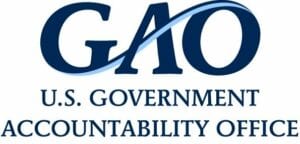“CLIMATE RESILIENCE : A Strategic Investment Approach for High-Priority Projects Could Help Target Federal Resources”
 On December 11, 2019, Mr. Mark Gaffigan of GAO offered a testimony regarding climate resilience and federal investment strategies. Following are excerpts.
On December 11, 2019, Mr. Mark Gaffigan of GAO offered a testimony regarding climate resilience and federal investment strategies. Following are excerpts.
“Planning for federal investments in climate resilience projects to limit fiscal exposure is no longer a hypothetical issue. The Disaster Recovery Reform Act of 2018 provides one potential source of funding for climate resilience projects. In particular, it allows the President to set aside up to 6 percent of the estimated aggregate amount of grants from certain emergency programs under a major disaster declaration to implement pre-disaster hazard mitigation activities. The Federal Emergency Management Agency (FEMA) will administer the associated program—the Building Resilient Infrastructure and Communities program. As of the date of this testimony, FEMA had not yet developed program guidance, although the agency has sought input from the public on program design. FEMA officials estimate annual funds for the program will average $300 million to $500 million.”
“Six key steps provide an opportunity for the federal government to strategically identify and prioritize climate resilience projects for investment, based on our review of reports (including a National Academies report and the U.S. Global Change Research Program’s Fourth National Climate Assessment) that discuss adaptation as a risk management process, as well as on international standards, our past work (including our enterprise risk management criteria), and interviews with stakeholders.”
“The six key steps are (1) defining the strategic goals of the climate resilience investment effort and how the effort will be carried out, (2) identifying and assessing high-risk areas for targeted resilience investment, (3) identifying potential project ideas, (4) prioritizing projects, (5) implementing high-priority projects, and (6) monitoring projects and climate risks.”
“As we reported in October 2019, on the basis of our review of relevant reports and our past work, interviews with stakeholders, and illustrative examples, we identified two options—each with strengths and limitations—for focusing federal funding on high-priority climate resilience projects. The options are (1) coordinating funding provided through multiple existing programs with varied purposes and (2) creating a new federal funding source specifically for investment in climate resilience. In addition, our analysis of these sources identified opportunities to increase the climate resilience impact of these two funding options.”
“Based on the findings of our October 2019 report, we recommended that Congress consider establishing a federal organizational arrangement to periodically identify and prioritize climate resilience projects for federal investment. Such an arrangement could be designed using the six key steps for prioritizing climate resilience investments and the opportunities to increase the climate resilience impact of federal funding options that we identified in our report.”
Gaffigan’s full statement can be found here: https://www.gao.gov/assets/710/703117.pdf
